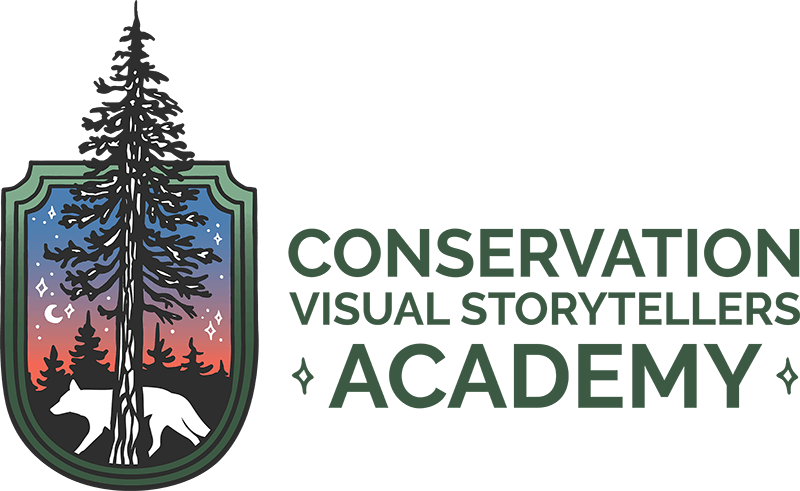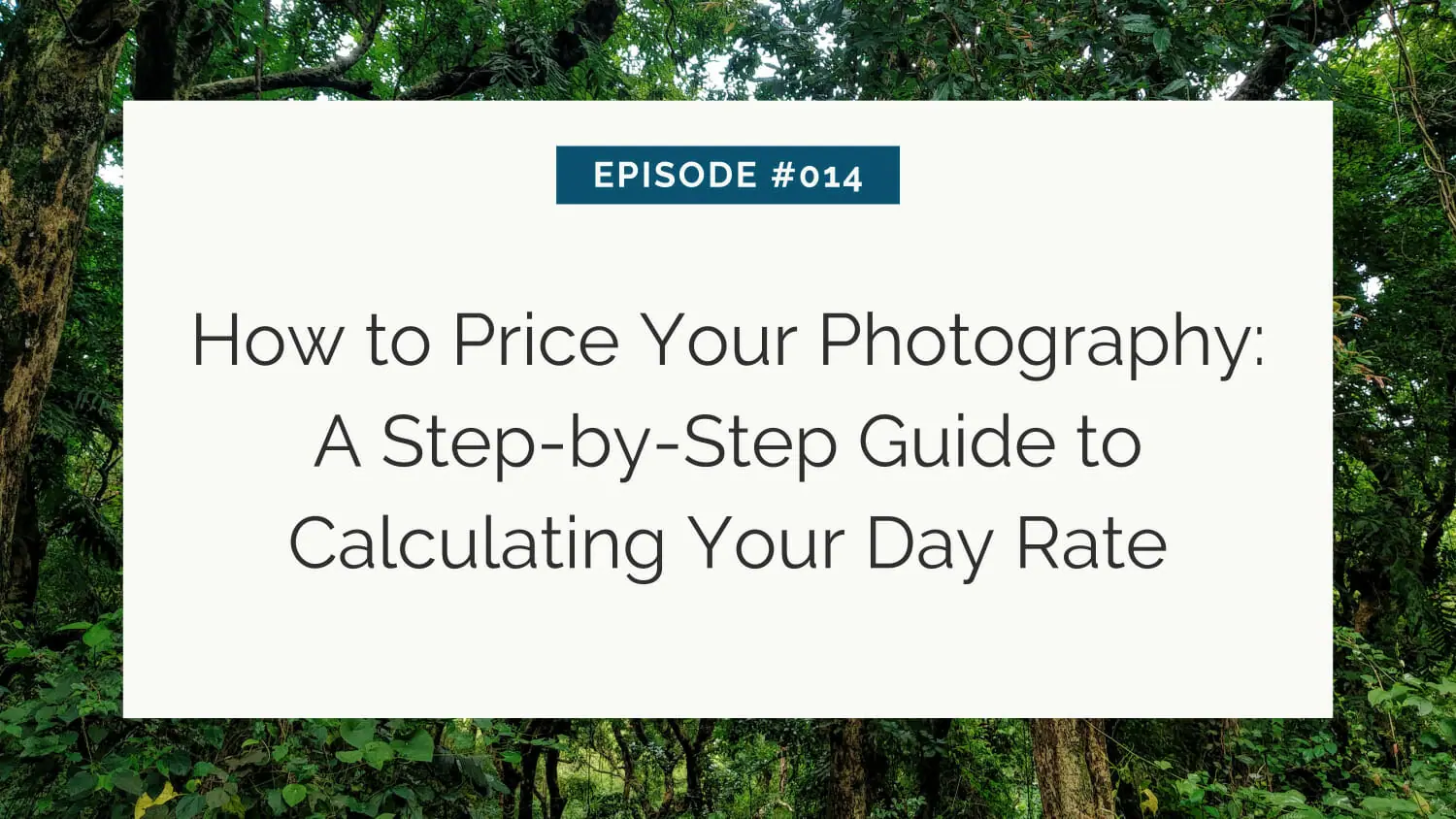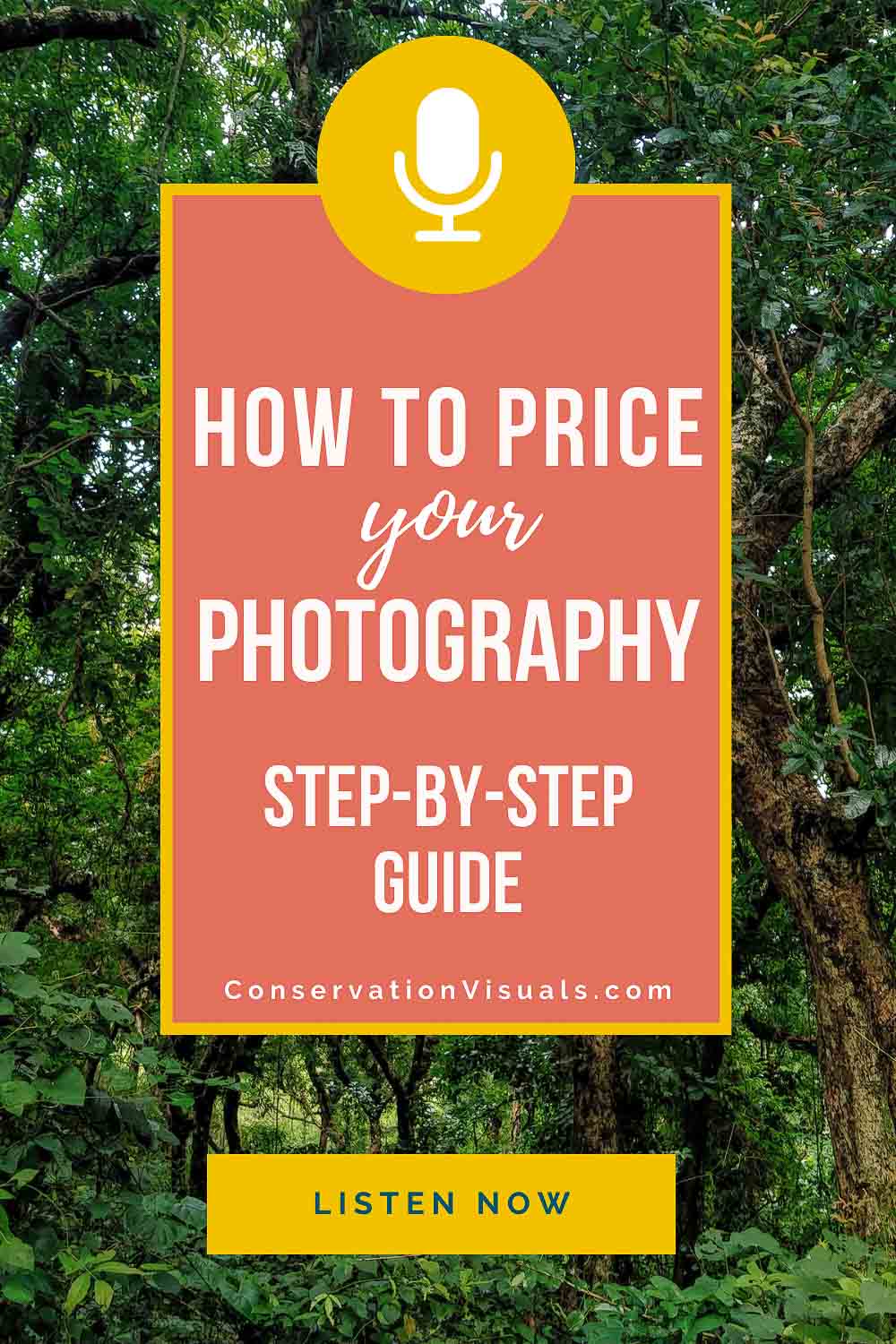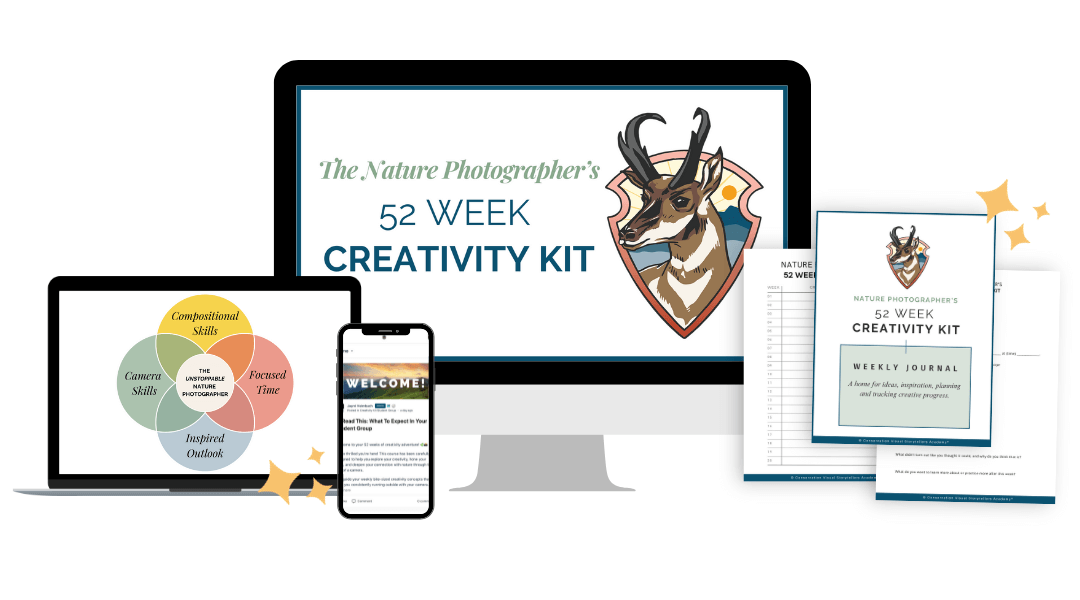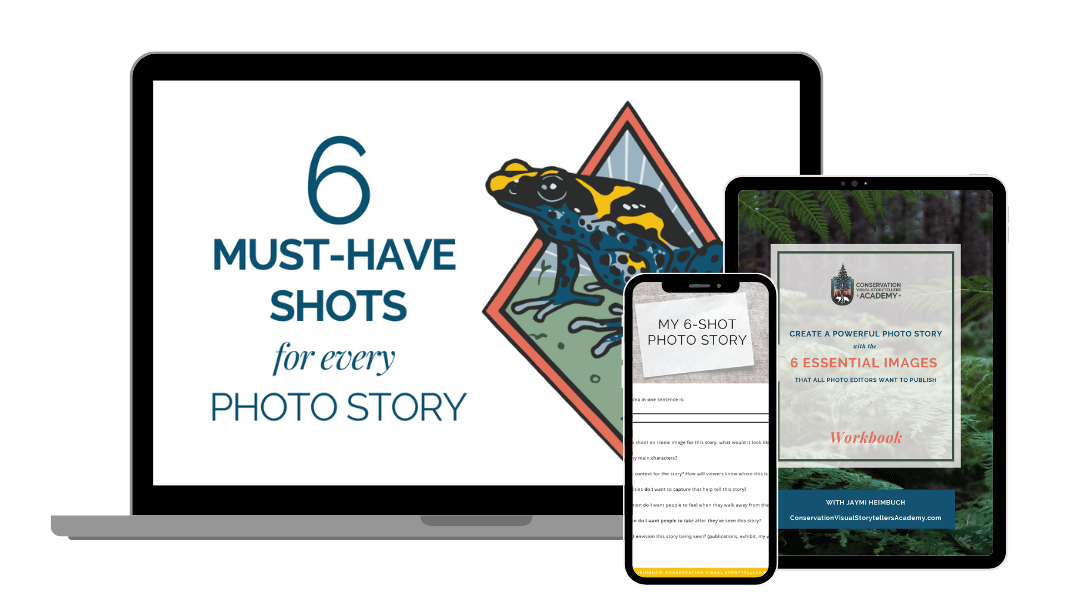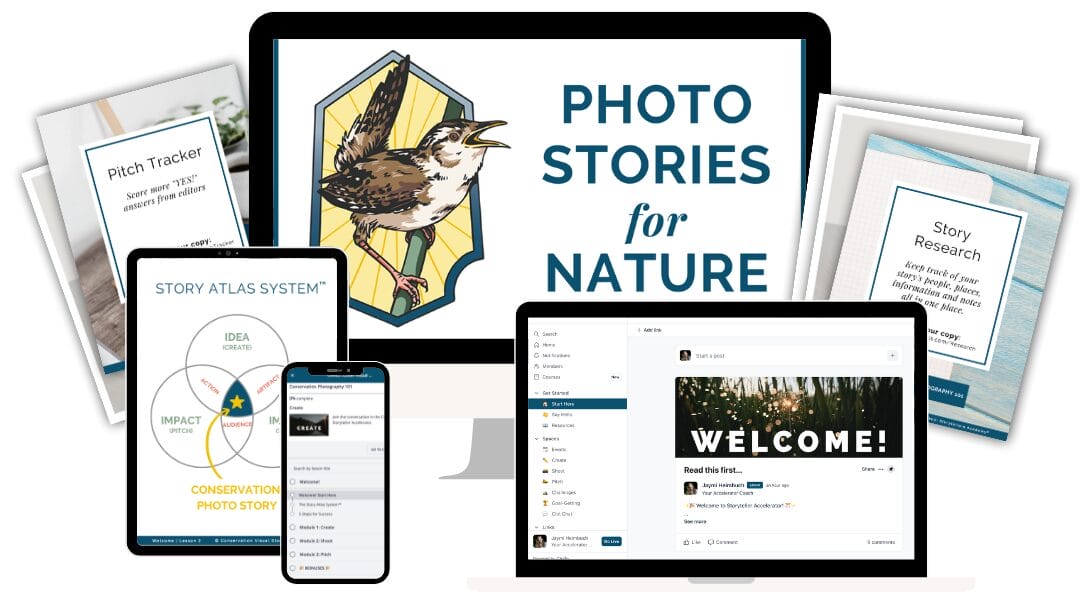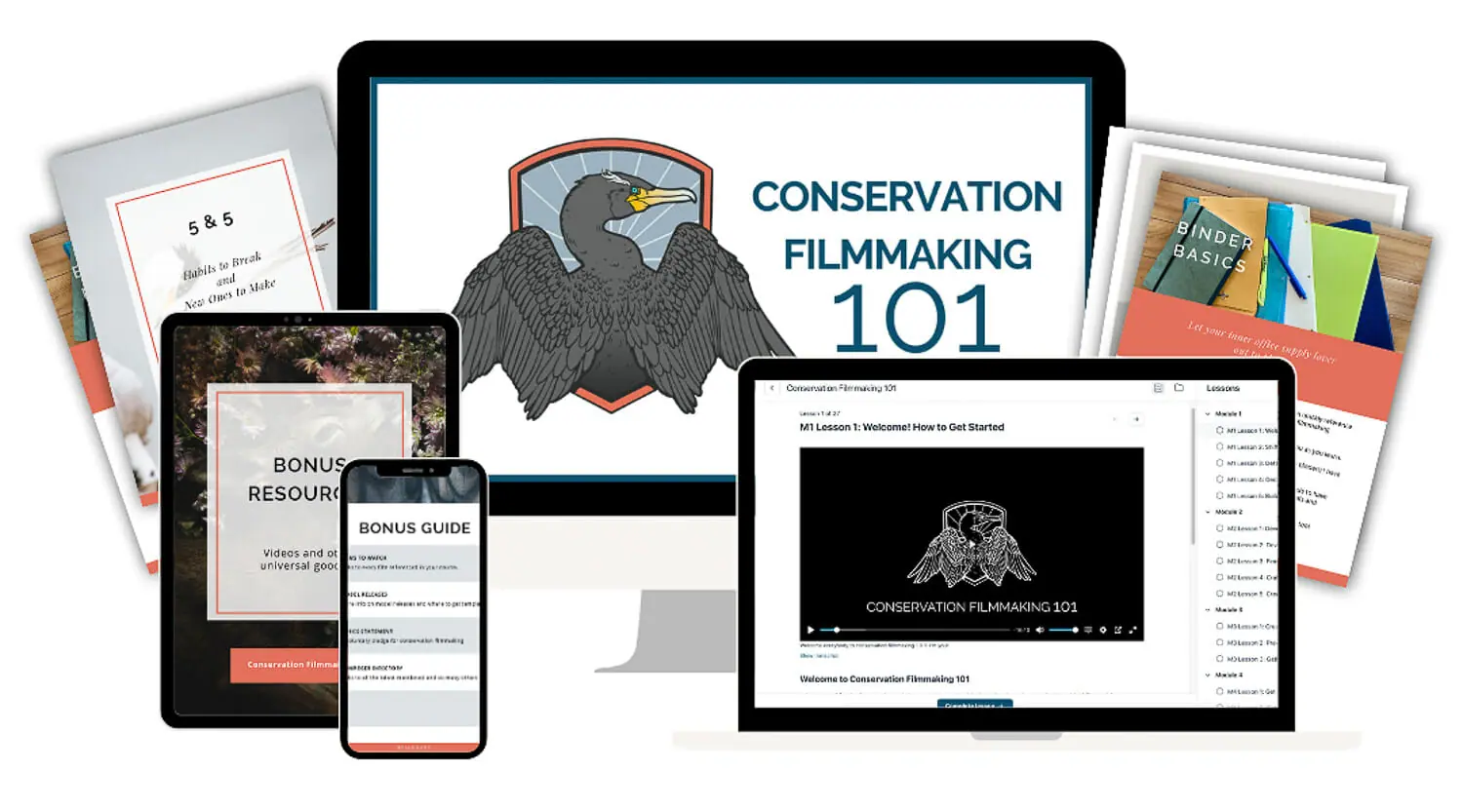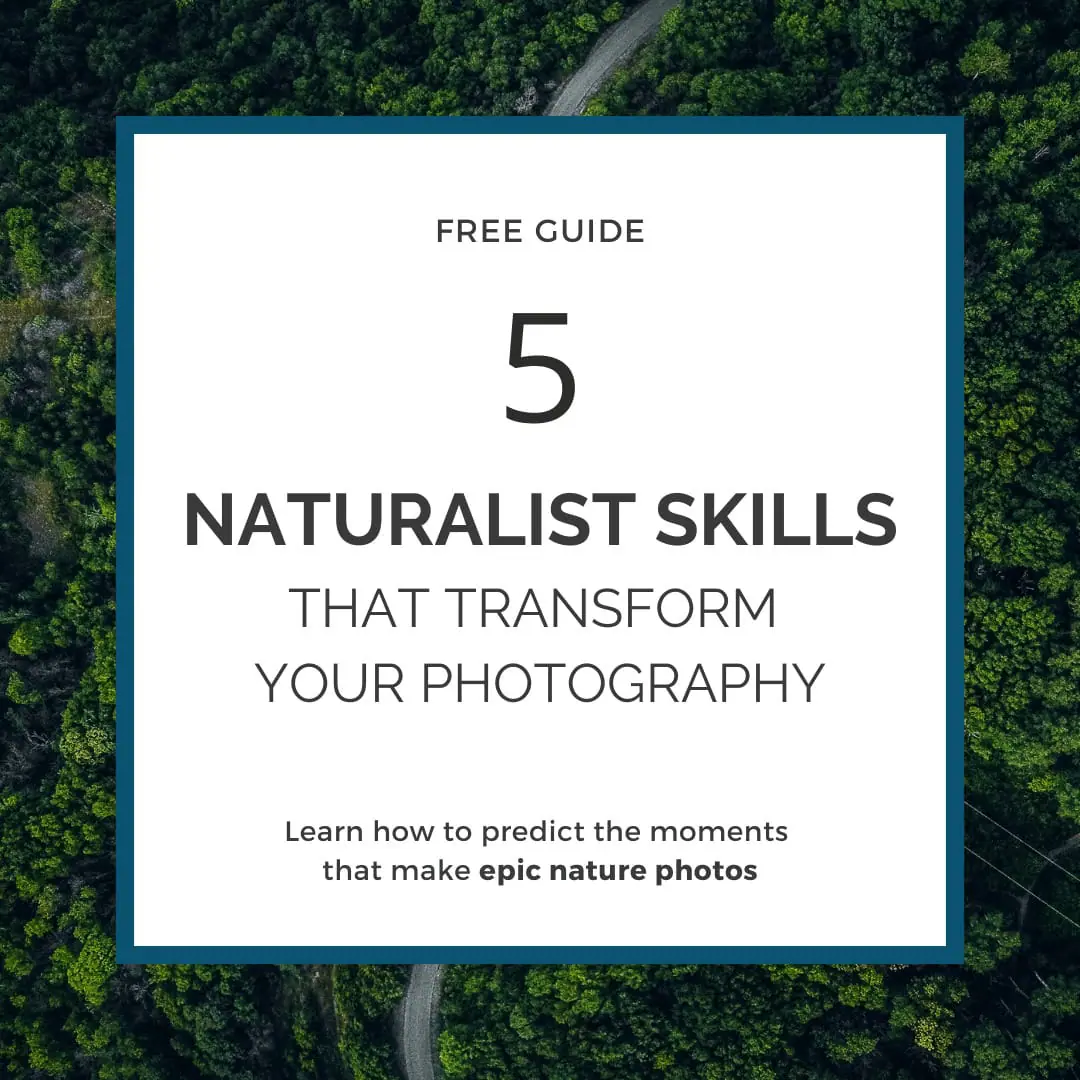How to Price Your Photography (2023)
A day rate is a surprisingly tricky number to figure out. How much should you charge for your skills, per day in the field? What amount is ‘normal', what are others earning, what can your client afford? Luckily, arriving at the best day rate to charge is something you can base in fact, not guesswork. Here's how.
What is a photography day rate?
A topic that stumps many conservation photographers – whether you're just starting out, or have been in the field for quite some time – is what you should charge as your day rate.
A day rate is the amount you charge for a full day's work in the field. It's what you earn when working on an assignment for a publication or client.
It is a unique and ever-changing number that varies for each photographer based on business needs, experience level, and personal value.
If you're new to the industry, you might be unsure what's considered normal or how to adjust your rate based on your experience level and client budgets. On the other hand, if you're a seasoned pro, you might feel pressured to match your peers' rates to stay competitive or accept whatever rate your client offers to secure an assignment.
But a day rate is not a number to randomly guess at.
Instead, it must be rooted in hard facts, taking into account the earnings needed to run a profitable business plus the value you bring to the table.
For example, a National Geographic veteran with 25 years of experience will likely have a higher day rate than a new conservation photographer with less experience.
Because of all these variables, calculating a day rate can feel intimidating. Yet, going through the steps to develop a rate based on exact numbers and rooted in the reality of your photography business can be a genuinely confidence-boosting exercise.
3 core factors for calculating a photography day rate
There are three core factors to keep in mind as you calculate a day rate:
1. Your Business Needs
Your day rate is not a random number plucked from thin air. It must be grounded in your business expenses and income requirements. To run a profitable conservation photography business, you need a day rate that covers all your costs and gives you a decent paycheck.
2. Industry Standards
Although your day rate should be tailored to your unique situation, it's essential to be aware of the industry norms. Research what other photographers with similar experience and skill levels are charging. Use this information as a benchmark for your rates.
3. Your Clients' Budgets
Last but not least, always take your clients' budgets into account. While you may need to charge a specific amount to keep your business afloat, it's crucial to strike a balance between your needs and your clients' financial constraints.
Arriving at that ideal number is ultimately a simple matter of a basic calculation and then a little calibration. So let's start to take this step by step.
To help, I have a fantastic tool for you – a day rate calculator designed specifically for photographers. This user-friendly calculator helps you determine your ideal day rate by factoring in expenses, income goals, various income sources, and the number of working days per year. Pop your variables in and voila! You have your day rate. You can download this fantastic tool for free, keep it handy, and let's explore what it takes to calculate your perfect day rate.
How to calculate a photography day rate in 4 steps
There are just four steps to figuring out your ideal day rate. And because day rates shift based on your business needs and experience levels, this is an exercise I recommend you go through every few years.
1. Get clear on your business expenses
Business expenses are a crucial aspect to consider when determining your day rate.
Whether you're a professional or just starting as a hobbyist or side hustler, treating your photography like a business is essential.
Knowing your expenses helps you determine a fair and reasonable rate to charge.
If you haven't been tracking your expenses, start using a Google spreadsheet, QuickBooks account, or similar tool to monitor them regularly.
Some basic categories of expenses include:
- operational costs (office space, utilities, furniture, office equipment)
- computer and printing equipment (software, printers, paper, ink)
- online presence (website hosting, email service provider for your email list, cloud storage, backups)
- photography equipment (purchases, maintenance, repairs)
- insurance (business liability, equipment, vehicle, property)
- professional services (accountant, lawyer, advertising)
- business structure costs (licenses, entity filings, copyright registration fees)
- professional development (courses, continuing education, memberships)
- transportation (flights, car rentals, fuel, parking fees, tolls)
- employee-related expenses (salaries, health insurance)
To calculate these expenses, review your past year's accounting records or credit card and bank statements, and highlight all photography-related expenditures. This will help you categorize your expenses and determine your average costs, providing a solid foundation for calculating your day rate.
2. Decide your income goals
Determining your income goals involves asking yourself two key questions:
- How much do you want to make from your photography work
- How much do you need to make to maintain your desired lifestyle?
Your business should provide you with a paycheck that covers your personal expenses.
For full-time professionals, this means accounting for everything – mortgage payments, car payments, food, utilities, vacations, entertainment, clothing, retirement savings, and more.
If you're pursuing photography as a side hustle or hobby, your income goals might focus on making enough per month to offset expenses or working towards eventually transitioning into a full-time career.
By clearly defining your income goals, you'll be better equipped to calculate a reasonable day rate for your photography business.
Learn More: How to turn your photography hobby into a profitable side-hustle
3. Determine the percentage of revenue from assignment work
When setting income goals, consider how much you want to earn from assignment work – where a day rate applies – and how much comes from other sources like image licensing (here's tools for calculating photo licensing fees), speaking engagements, or workshops.
Think about the portion of your photography income you want to come from specifically from assignments with day rates.
Additionally, evaluate how many days you can dedicate to assignment work per year.
For example, suppose you have a full-time job outside of photography. In that case, you might be able to allocate around 60 days a year for assignments. As a full-time professional photographer, you could potentially spend 250 to 300 days a year in the field. However, remember that only some of your time is spent in the field, as post-processing, editing, and managing business tasks also require attention.
By understanding how many days you'll be working in the field and the percentage of your revenue coming from assignment work, you'll be better equipped to calculate an appropriate day rate for your photography business.
You may need to adjust these factors until everything balances out.
For example, you might find that in order to meet your income goals and cover your expenses, you have to work more days than you thought. Or you might discover that because you can only work a certain number of days in the field, you need to minimize your business expenses to meet your income goals.
This is where my free day rate calculator becomes an invaluable tool (if you haven't downloaded it yet, scroll on up to the form to grab it).
By inputting all these numbers into the calculator, you can easily visualize and adjust them until you reach your ideal day rate.
Once the calculator generates that number, you'll better understand what to charge based on your expenses, income goals, and working days in the field. This will help you create a sustainable and profitable photography business.
4. Calibrate and re-calculate
After determining your day rate based on expenses, income goals, and working days, you may need to calibrate it further.
For example, charging $100 a day might cover your expenses, but it's significantly lower than the industry standard, which can range from $500 to $1,000 or more per day. To find a realistic rate, research what other photographers with similar experience levels charge and consider client budgets.
To gather this information, ask fellow photographers about their day rates and what clients typically offer. Most conservation photographers are happy to help each other out.
Once you have a day rate based on solid numbers and research, adjust it according to what your client can afford.
If they can't meet your desired rate, consider increasing the value of the package instead of lowering your rate. This could include adding extra images, video snippets, a social media package, or other marketing materials that won't significantly increase your expenses.
By enhancing the value of the package, you can maintain the income you need while making your client satisfied with their investment. Turning a potential walk-away situation into a win-win scenario benefits both you and your client.
Remember to be kind, respectful, and open to negotiation in these conversations to foster positive relationships within the industry.
Calculating the perfect day rate for your photography business involves considering both hard numbers and less tangible variables. The key is to find a balance that ensures sustainability and success while doing this vital work.
Remember, conservation photography is essential; every photographer deserves to earn a paycheck for their valuable contributions. I genuinely want you to succeed in this field because your work significantly benefits all of us.
So grab your day rate calculator, and take the first step toward a thriving, profitable conservation photography business.
Episode 014: How to Calculate a Day Rate for a Profitable Conservation Photography Business
Shownotes: ConservationVisuals.com/14
(Digitally transcribed, please forgive any typos)
________________
Jaymi Heimbuch:
One of those tricky topics that comes up for everybody working inside of conservation photography, whether you are just getting started or you've been doing this for a long time, is what should I charge as my day rate. So a day rate is what you charge in order to do a day's worth of work out in the field. And if you are getting started, you might have no idea what to charge. You don't know what is normal or how you might adjust it based on your experience level or client budgets. Like what? What is even a ballpark figure for a day rate? And as a pro, you might feel pressure to charge whatever it is that your peers or colleagues are charging in order to be competitive or in that same ballpark. Or you might feel like you have to accept whatever dairy is offered by your client in order to make sure that you land that assignment.
But the thing is, your day rate is a number that has to be founded in hard and fast facts. So rather than just coming up with a ballpark figure because that seems reasonable for, you know, an industry standard. You really need to understand your business needs and what expenses you need to cover what income you need to generate in order to make this a viable living. And you also really need to understand your value. So today we are going to talk about what goes into calculating a day rate for a profitable conservation photography business and to help you do this.
Not only is this episode totally dedicated to the topic in the ins and outs, but I have got an amazingly wonderful tool for you to use. It is a day rate calculator, and it is way be fear than anything that I found out their to help photographers calculate the appropriate day rates. What this calculator does is you enter all of your expenses you enter in your income goals and sources for different income and how many days a year you can work. And it will tell you what dairy you need to charge in order to meet certain goals within your business. It is really, really amazing. I'm in love with this thing, and you can download it for free at JaymiH.com/14. That's JaymiH.com/14 The number 14 for this episode. It is my gift to you in the hopes that you will use it to help build a sustainable, profitable conservation photography business because we need as many conservation photographers out there making a living doing this really important work as possible. So grab that day rate calculator, keep it on your computer, and meanwhile, let's go ahead and dive in to what it actually means to calculate a day rate and what goes into finding that ideal number for you.
Welcome to impact the conservation photography podcast. I'm your host, Jaymi Heimbuch, and if you are a visual storyteller with a love for all things wild, then you're in the right place, from conservation to creativity, from business to marketing and everything in between. This podcast is for you, the conservation visual storyteller who is ready to make an impact. Let's dive in
A day rate is an interesting number. It's a little bit different for everyone, and it can even change for you as time goes by, depending on changes within your business needs and your experience level and other factors. But what exactly are all of these factors. Ultimately, a day rate is not a number that you grab out of thin air that you guess at, or you just go with whatever someone tells you to go with a day. Rate is based on what you need to earn in order to run a profitable business and by profitable, I mean, you're able to cover all of your business expenses and provide yourself with a paycheck.
And a day rate is also based on your value. How much experience and skill are you bringing to the table? So even after you've covered your expenses and you reach that paycheck need, you may be able to increase your day rate based on the added value of you, specifically as the photographer. If you're a 25 year National Geographic veteran, then you can bet that your day rate can be a whole lot more than another average conservation photographer who hasn't had that amount or type of experience. Now, despite all the variables that you might wonder about, your day rate is based on three core factors.
Number one, the amount that you need to charge in order to run a profitable business of hammer that one home already right Number two, reasonable rates for the industry standard. So, yes, you may be able to arrive at the exact number that you need. But what is a normal rate within the industry? For someone with your experience and skill, like that's core number two. And core number three is your client's budget, so you might know that you need to charge $5000 a day. Well, your client may not be able to afford that, right, So your dairy is based on these three things. What you need to charge for your business, a reasonable rate for an industry standard for someone like you and then your client's budget.
Arriving at that ideal number is indeed a simple matter of a basic calculation and then a little calibration. So let's start to take this step by step. First, we're going to calculate your rate. Now again, I have that awesome day rate calculator waiting for you. Ah, but let's talk about what goes into all of the different numbers that are added up in order to spit out a day rate. First, there's your business expenses. Now I want to pause for just a moment to make a really important point. If you are a pro, then you already are tracking your business expenses. As just a matter of what's required of you is a business owner. You know how much you spend in most areas of your business. If you are new, you're just starting out. You're doing this as a hobby or as a side hustle. I really want to a hammer home the point that you need to treat your business like a business, even if this is a hobby or a side hustle, because you have to know where you're spending your money, How much does it cost you to do what it is that you're doing? It's the only way that you're going to know what a fair and reasonable rate to charge really is. So I highly, highly encourage you that if you haven't been tracking your business expenses yet, so anything related to doing photography work, please use a Google spreadsheet or start up a quick books account or whatever it takes to make sure that you are tracking that on a daily basis. Right? Okay, so now the thoughts out of the way, let's get back to what goes into tracking your business expenses.
There's quite a few basic categories that everybody is going to have to some degree. And so some of those categories include basic operational stuff like office space. So are you renting studio space? Or if you're using a certain portion of your house as your office, what are you spending on electricity or Internet or cell phone in order to run your photography business out of your home? What are you spending on furniture and office equipment or other office operations, like maintenance and repair postage and that sort of thing? There's also your computer and your printing equipment. Every photographer's got a computer. Hard drives. Most of us have software purchases in order to do our image editing printers, paper ink, that sort of thing. And, of course, there's your online presence. Most photographers have some sort of a website, and that requires Web hosting. Software service is cloud storage and backups, those air all expenses that are definitely built into running your business as a photographer. Your online presence is how you get out there in the world, right, and there is your actual photography expenses. So the equipment that you buy or rent, how much you spend on maintaining that equipment, how much you spend on repairs and that sort of thing. There's also your insurance. So business liability insurance, photography equipment, insurance, vehicle insurance, property insurance. All of that adds up, and there's professional service is. So who else is supporting you in your business? This would be your accountant. Your lawyer Printing service is tax preparation, advertising. And, of course, there's business structure costs. So things like your business license entity filings. If you have an L. L C. Or if you have multiple names that you use in your business, so you're doing business as registration fees, your copyright registration fees, right? So either monthly or annual fees in orderto register your images in your intellectual property for copyright. There's professional development. I really hope that everybody has this as a business expense as well. There are things like courses and continuing education activities, books and magazine subscriptions, memberships to really great organizations that support you, and your work is a photographer. And then there is, of course, things like transportation. So how much are you spending a year on flights and car rentals? on fuel parking fees, tolls, all of those things that go into getting out there into the field and doing your work. And then finally, if you run a business where you have employees, how much are you spending on salaries or health insurance and other expenses of having an employee? So these are all the types of things that you're thinking about as a photography business owner. There's a ton of stuff, right? One of the ways that you can figure out a lot of these expenses is to simply go back through your accounting. Or, if you haven't been using accounting software, go through your credit card statements or your bank statements over the last year and highlight everything that you spent that was related to your photography business. And then that's gonna help you figure out how to categorize this and how to figure out your averages.
Okay, so you figure out your photography business expenses right? That is the first step in figuring out your day rate. But the next step is figuring out how much do you want to make from your photography work? How much do you need to make from your photography work? in order to live the lifestyle that you're living, so you need your business to pay you a paycheck that will cover your personal expenses. If you are a full time pro, this means covering everything your mortgage payment, car payment, food, electricity, being able to go on vacation and out to the movies and buy new clothes. It's everything, right? If you are doing this as a side hustle or a hobby, then your income goals could be how much you want to make per month in your photography, too, may be offset your expenses. Or it could be how much you want to make in order to one day transition fully into becoming a full time pro. So you figure out your business expenses.
You figure out your income goals, and then you're kind of also looking at how much you want to make from assignment work where a day rate is involved and how much comes from other sources, like image licensing, speaking engagements, running your tours or your workshops, and whatever else it is that you get up to. How much money do you want to make from your photography work? How much of that is your actual assignment. Work with your day rate, and finally, you want to know how much can you work throughout the year? How many days of the year are you going to be out in the field earning that day rate? So if you have a full time job that is not photography, you might only be able to dedicate maybe 60 days a year to assignment work. If you're a full time pro who's primarily out there earning your income as a photographer, creating work in the field, earning that day rate than you might be, maybe spending 250 days 300 days a year in the field. Now that is not necessarily realistic, because again, when we're talking about a day rate, we're talking about you being out in the field and usually that times being spent out in the field. Is it relatively small portion? Because a lot of your time after you've created those images of those media assets, you're actually back at home doing post processing, editing all of your business functions. You're doing things other than being out in the field. But then again, for a lot of us that might be as many like you may be spending 200 or 300 days a year in the field. Who knows, whatever it is know about how many days of the year you are actually out in the field earning that day rate.
So all of those things, those three things. Your expenses, your income goals and how much you're actually working those air three critical factors to figuring out your date rape. You can adjust your expenses, your income goals or you're working days until everything balances out, so you might find that in order to meet your income goals, considering your expenses, you have to work more days than you thought or the reverse. Or you might figure out, while you can only work a certain number of days in the field and therefore you need to figure out how to minimize your business expenses in order to meet your income goals. That's why the calculator is such a great tool with this calculator that you can download for free from my website, it's JaymiH.com/14. You can actually input all of these numbers and play around with thumb and your day rate is going to be calculated based on how you adjust all of these numbers. It's a really great visual way to figure out all of the stuff and play with it until you basically reach your ideal numbers and your ideal year. Now, once you come up with that number.
So you played with all of these numbers. These three factors your expenses, that income goals that you have on the number of days that you can actually be out there in the field, earning a day rate once you've played with those and you figured out exactly what your day rate should be that calculators spit out that number for you. Then you're gonna do some calibrating so you might find that your required day rate your minimum dairy in order to meet all of these goals with all these factors, is not necessarily a realistic rate to charge. So you might realize that you don't have really high income goals, and you have very few expenses, and so therefore, you only have to charge $100 a day to cover your expenses and reach your income goals. But $100 a day is an absurdly low day rate. Most professional photographers are going to charge anywhere from $500 to $1000 or more per day, depending on their experience level, the quality of work they provide the type of assignment work that they're doing and other factors. So even though you might realize that you only have to charge $100 a day to cover your expenses, you're going to calibrate that based on your experience level and what a normal industry standard rate might be, as well as what your client budget is.
So this is where you do your research. You're gonna go out there and you're gonna ask other photographers who are at different experience levels and similar experience levels those who are doing similar type of work and you're gonna ask them what they usually charge for a day rate. Or you're gonna ask, what does this client usually offer as a day rate? Or what does this publication usually offer as an assignment dairy And you're going to start to pull as many numbers as you can to really get an understanding of what a normal day rate for someone like you with your experience level and your skill level what you should be charging. So even though you are doing this, maybe is a hobby, you're fairly new. You only have to charge $100 a day. You may realize that in order to be within that kind of industry range, you should really be looking more at, like $400 a day or $600 a day in order to fall within a range that makes sense for the industry. There's a lot of information out there that you can start to pull from and do some research on, and I encourage you to ask around. It's okay to ask, Be kind and respectful about it, of course, and be respectful if someone would rather not say what their dairy is. But most people in conservation photography are very willing to help each other out with numbers and information in order to make sure that all of us are getting a fair shake. When we're out there working our tails off on really important work. So feel free to ask once you have a day rate that's based on hard and fast numbers, and then you have that research in hand.
You can do your calculating and your calibrating, and then you're also going to look at what your client can afford. Arriving at that profit perfect rate is ultimately up to you, and so, too, is sticking to your rate when necessary and being willing to walk away from a potential gig. If you and that potential client aren't able to reach a rate that's fair to you, and that works within their budget and your needs now I want to throw out an extra quick tip when it comes to this topic. If you find that your client can't afford the day rate that you need to charge for your photography business to be sustainable, then I would ask you to consider increasing the value of the package for your client rather than lowering your day rate. So you know that there is a certain number that you need to earn in order to make everything work out for you, right? Well, if your client is worried that that isn't something that works for them than increasing the value of the package for them can become a real win win situation. So what else might your client love to have as a deliverable. And is that deliverable possible for you to provide without increasing your expenses?
So, for example, can you add additional images into the portfolio that you're providing, or maybe a few video snippets? Orb the role that you weren't gonna otherwise create that you know that you can create and provide as added value. Can you add on a social media package? It might be a few extra hours worth of work for you but provide tremendous value to your client, Or are there other marketing materials that you might be able to create for them? That might add a little bit of time on to your schedule to create that, but it won't necessarily add to expenses, or it won't be a significant burden for you. And yet it adds immense value for the client. If you're able to do that, then you can probably maintain the income you need while also making your client really happy with their investment. They see that they're getting way more for the same amount of money, and then that makes them I have an easier time figuring out how to make it work for their budget right? It can be a way to turn a potential walk away situation into a wonderful win win situation.
Think a lot about how your day rate is a number that needs to be based, in fact, and in real hard numbers, and then also about all of these other, less tangible variables that go into it in order to arrive at the perfect day rate for you. But first and foremost, those hard and fast numbers are critical, so I encourage you to go to JaymiH.com/14 to get your day rate calculator. It's a great tool not only to figure out that day rate that you need, but also to figure out what expenses you should be thinking about and considering it's a way to really get your brain organized around what all is going into your business and what all you need to consider in order to earn an income that makes this a sustainable, successful paid, shack oriented business for you to be in, because again, conservation photography is really important work, and every conservation photographer deserves to be earning a paycheck from that work. I really, really want you to be successful in this field because what you do is so important to all of us. Okay, so grab your day rate calculator. If you have any questions, I invite you to come into the conservation photographers Facebook Group. This is the free Facebook group that I run specifically for conservation photographers and inside of that group. This is you're welcome space in orderto ask those questions such as, What do you charge for your day rate? All right, I hope to see you inside the group, and meanwhile, I will talk to you next week
Before we wrap up. I would love to ask you to do one quick thing. Subscribe to this podcast as a subscriber, you'll not only know when each week's episode those lives, but you'll also get insider goodies like bonus episodes. You might miss thumb unless you're subscribed and I don't want you to miss out on a thing. So tap that subscribe button, and I will talk to you next week.
________________
Impact: The Conservation Photography Podcast
JaymiHeimbuch.com/Podcast
